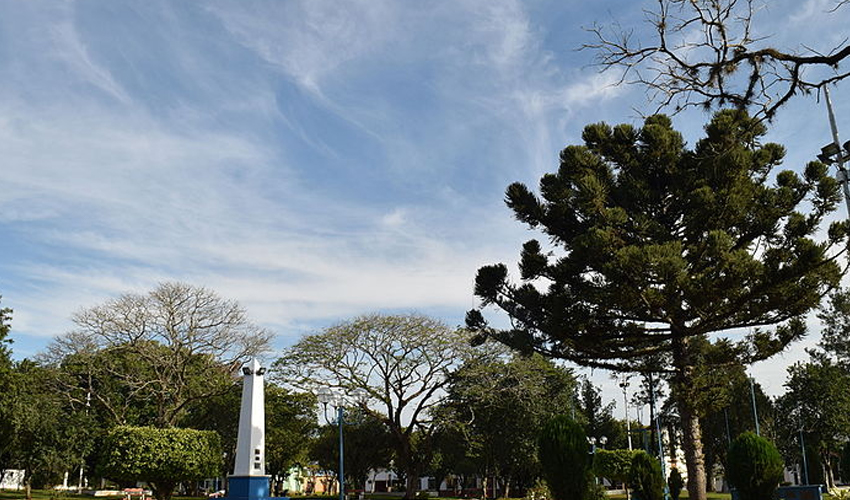San javier history

The history of San Javier, as is the case of other municipalities in this area, is influenced to a huge degree by its location on the inland shore of the Mar Menor, the largest saltwater lake in Europe and one of the most recognizable geographic areas of Spain
The geological origins of the Mar Menor lie in the Tertiary It was between 65 million and 1.7 million years ago, when the Baetic mountains were being formed and the area which is now the inland sea was an open bay on the Mediterranean coast. As a result of the folding and rising of the land over a period of around 10 million years, the basin of the bay was filled with a large quantity of sediment from the countryside of the Cartagena Field and the rivers and floodwater which ran through
At the same time, a series of volcanic eruptions under the seabed gave rise to the islands close to La Manga, the land masses of Calnegre and El Carmolí, and other small promontories. These areas of higher ground contributed to the natural tendency of the marine currents from the north to run into Cabo de Palos depositing a spit of water which gradually grew until it almost completely closed off the lake This spit of water, of course, is La Manga From the Mar Menor By about 2,000 years ago the Mar Menor had begun to look similar to what we know today: it was becoming a closed lagoon linked to the Mediterranean only by small channels known as Golas, and gradually became almost completely separate from the Mare Nostrum or Mediterranean, of which it had previously been a bay
THE TOWN
By this point the Berber attacks had long since ceased and the population began in the can cos costers in the field or The bordure to grow significantly In 1809 there were 408 residents in San Javier, Roda and La Calavera, and by the time of the three-year Liberal government in Spain (1820-23) San Javier along with Sucina, Corvera and Pacheco Tower, was considered large enough to warrant its own Town Hall
Unfortunately for the locals, though the French intervened and reinstated the absolutist monarchy and those localities with newly acquired Town Hall status were stripped of their privilege as a result: in the case of San Javier, this meant to return to being governed from Murcia
Nonetheless, the growth of the town continued, and soon afterwards, on 9th March 1836, the independent municipality of San Javier was formed (in the same year as San Pedro del Pinatar) It included the villages of La Calavera. Grajuela Roda and Tarquinales, as well as pasture land in Los Alcázares and La Manga
But the last years of the 19th century were not kind to San Javier, and economic hardship led many to leave and seek work in the mines of La Unión, or indeed much further afield in Oran, on the coast of Algeria. Those who were left numbered just 3,770 by the turn of the century, and they made their living as best they could as farmers, agricultural laborers, fishermen and artisans
Some in San Javier could have feared that their town was soon to return to the poverty of the of the Middle Ages but at the same time some families made considerable sums of money by selling land, and a new middle class emerged, consisting of property managers, mining entrepreneurs agricultural administrators and other professionals.
In 1888 a preacher named José Maria Barnuevo founded a new village on the shore of the Mar Menor, and named it after the religious and military order to which he belonged, the Orden Militar de Santiago. This village of course, was Santiago de la Ribera and along with the first houses the church dedicated to Santiago Apostle was also built in time for the town's founding father to be buried there
CULTURALACTIVITIES
San Javier offers the widest range of cultural activities in the Murcia Region. As well as the many exhibitions of all kinds held throughout the year, it features theater productions, concert etc. The excellent local facilities include art galleries, events halls and the magnificent Almansa Park Municipal Auditorium.
The Festivals of San Javier are enviable and practically unrivaled. From June to September our residents and visitors can choose from a wide range of possibilities to spend their leisure time from diverse kinds of music performed by artists of today or the more specialized music of the International Jazz Festival, whose harmonious and rhythmic sounds fill the night air of San Javier during the mouth of July, In August the yet mythical International Theater, Music and Dance Festival, that with its more than fourty years' existence, still achieves to surpass the foregoing events and brings the top of any kind of contemporary scenic art to the Almansa Park Auditorium.
Another interesting cultural event takes place in September, namely the National Folklore Festival, which offers, apart form gala performances in the Auditorium, performances on the beaches of Santiago de la Ribera and La Manga del Mar Menor
At San Javier, close to Mar Menor, something as simple as the birth of a child becomes a great event: visitors from right across Spain are attracted to the well-earned fame of the Seasonal Monument on display at the Belen of Spain Museum in the heart of town. Represented in figures crafted by Murcia's top artists, the Monument occupies a space of nearly 1.6 km2 with representations of mysteries, local customs and ancient ways of working the land. As well as the indisputable quality of the figures, the waterwheels, soldiers, and etc. made up of moving figures and a ghlights are the scenes of workers, windmills, watersheds, soldiers, etc made up of moving figures

 Spanish
Spanish German
German Dutch
Dutch